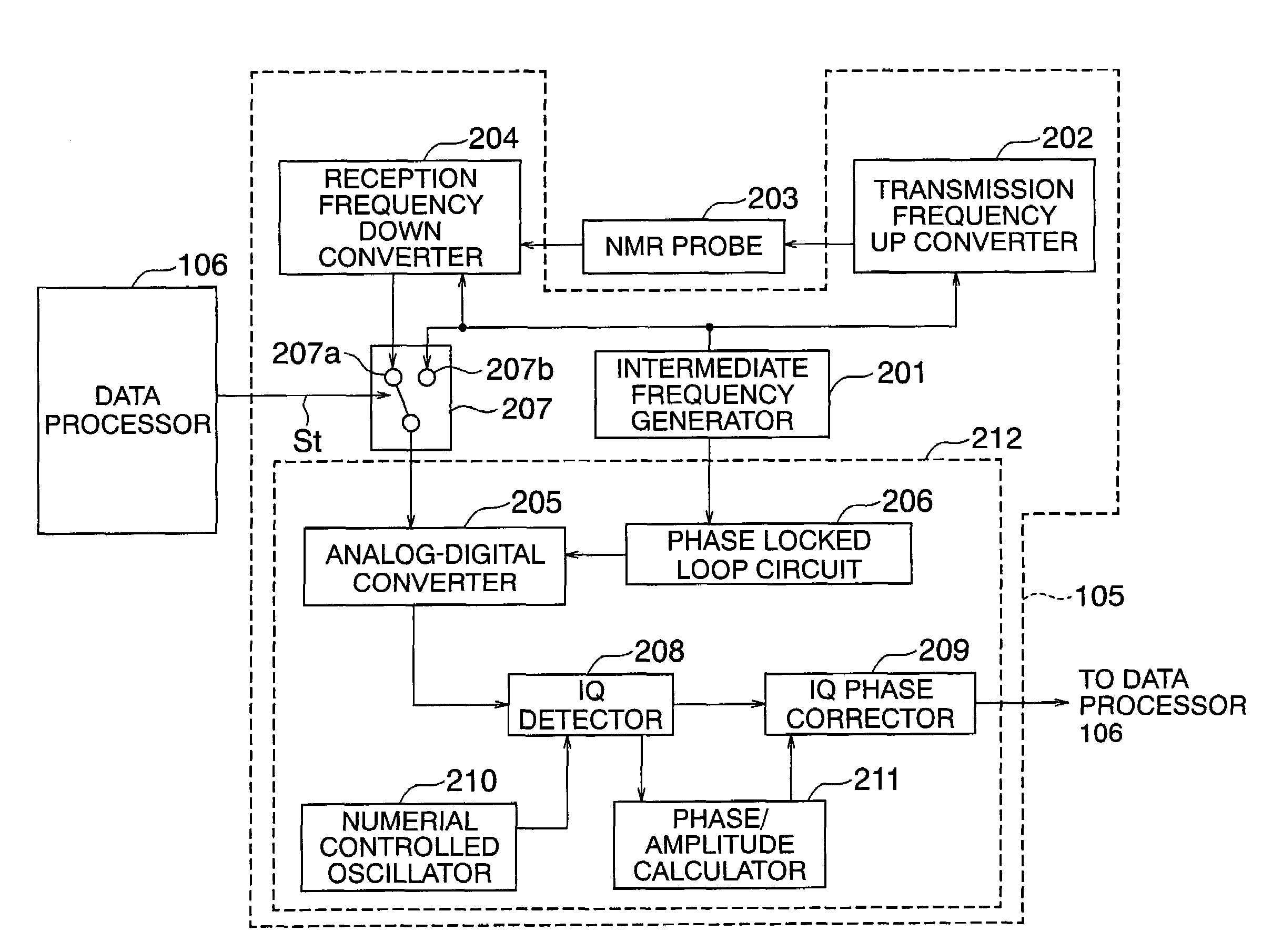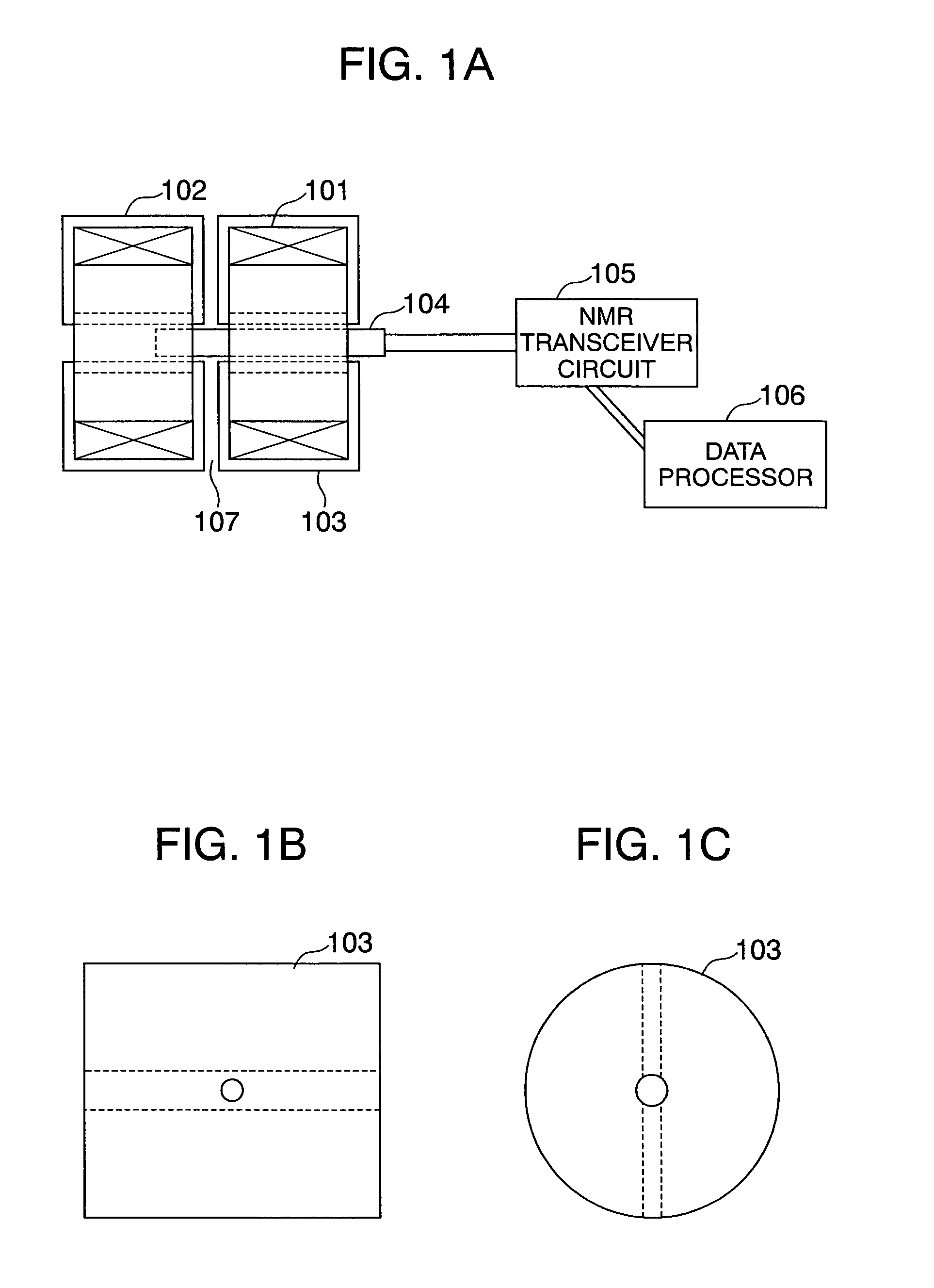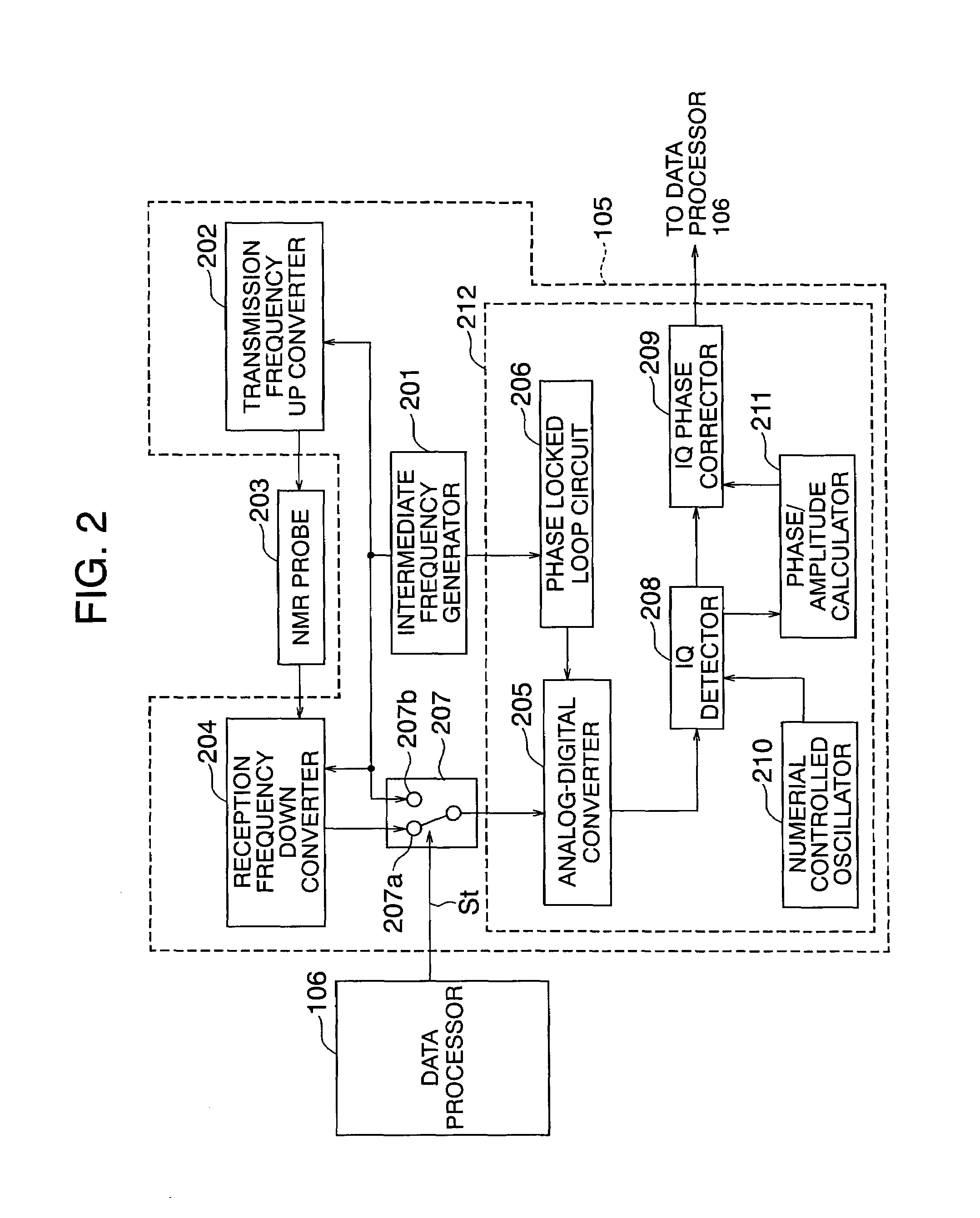Electromagnetic wave transceiver apparatus and nuclear magnetic resonance analyzing apparatus using it
a transceiver and nuclear magnetic resonance technology, applied in the direction of instruments, galvano-magnetic hall-effect devices, using reradiation, etc., can solve the problems of insufficient suppression of measurement errors due to phase and amplitude shifts during measurement, difficult to keep phase coincident over several hours, etc., to achieve the effect of reducing production costs, improving the degree of freedom of modulation, and speeding up the speed
- Summary
- Abstract
- Description
- Claims
- Application Information
AI Technical Summary
Benefits of technology
Problems solved by technology
Method used
Image
Examples
embodiment 1
[0091]Making also reference to a block diagram of FIG. 2, the construction of NMR transceiver circuit 105, inclusive of peripheral components, according to a first embodiment of the invention will now be described. The NMR transceiver circuit according to the present embodiment includes an intermediate frequency generator 201 for generating an intermediate wave, a transmission frequency converter (for example, a frequency up converter) 202 for preparing, on the basis of an intermediate frequency of the intermediate wave prepared by the intermediate frequency generator, an electromagnetic wave to be transmitted to a sample, a reception frequency converter (for example, a frequency down converter) 204 for processing a free induction decay signal (hereinafter referred to as “FID signal”) a receiver coil in a NMR probe 203 has received as a result of transmission of the electromagnetic wave to the NMR probe 203, an analog-digital converter 205 (hereinafter referred to as “A / D converter”...
embodiment 2
[0106]Turning now to FIG. 4, a second embodiment of the present invention will be described. The present embodiment is substantially the same as embodiment 1 with the only exception that switches are positioned differently and the construction of the remaining parts differs correspondingly.
[0107]In a NMR apparatus according to the present embodiment, a switch 207A is interposed between a transmission frequency up converter 202 and a NMR probe 203 and a switch 207B is interposed between a reception frequency down converter 204 and the NMR probe 203, so that the NMR probe can be on a roundabout route by providing a wiring line between these switches. The switches 207a and 207b can be controlled by timing commands sta and stb, respectively, from the data processor 106.
[0108]In the present embodiment, during the normal measurement, that is, when a FID signal is fetched from the NMR probe, the switches 207A and 207B responsive to the timing command sta and stb from the information proces...
embodiment 3
[0113]Next, a NMR transceiver apparatus according to a third embodiment of the invention will be described.
[0114]A NMR transceiver circuit according to the third embodiment of the invention is illustrated in block form in FIG. 5. The NMR transceiver circuit 105 includes a radio wave digital modulator 501 and a transmission frequency up converter 202 for preparing, on the basis of a modulation wave prepared by the radio wave digital modulator 501, an electromagnetic wave to be transmitted to a sample. The electromagnetic wave is applied to a transmitter coil of NMR probe 203 to generate a FID signal which in turn is received by a receiver coil of NMR probe 203 and processed by a reception frequency down converter 204. Further, the analog FID signal is converted into a digital FID signal by means of an A / D converter 205, to which a reference clock (or reference signal) generator 506 is connected. Also connected to the A / D converter 205 is an IQ detector 207 having its output transmitt...
PUM
 Login to View More
Login to View More Abstract
Description
Claims
Application Information
 Login to View More
Login to View More - R&D
- Intellectual Property
- Life Sciences
- Materials
- Tech Scout
- Unparalleled Data Quality
- Higher Quality Content
- 60% Fewer Hallucinations
Browse by: Latest US Patents, China's latest patents, Technical Efficacy Thesaurus, Application Domain, Technology Topic, Popular Technical Reports.
© 2025 PatSnap. All rights reserved.Legal|Privacy policy|Modern Slavery Act Transparency Statement|Sitemap|About US| Contact US: help@patsnap.com



